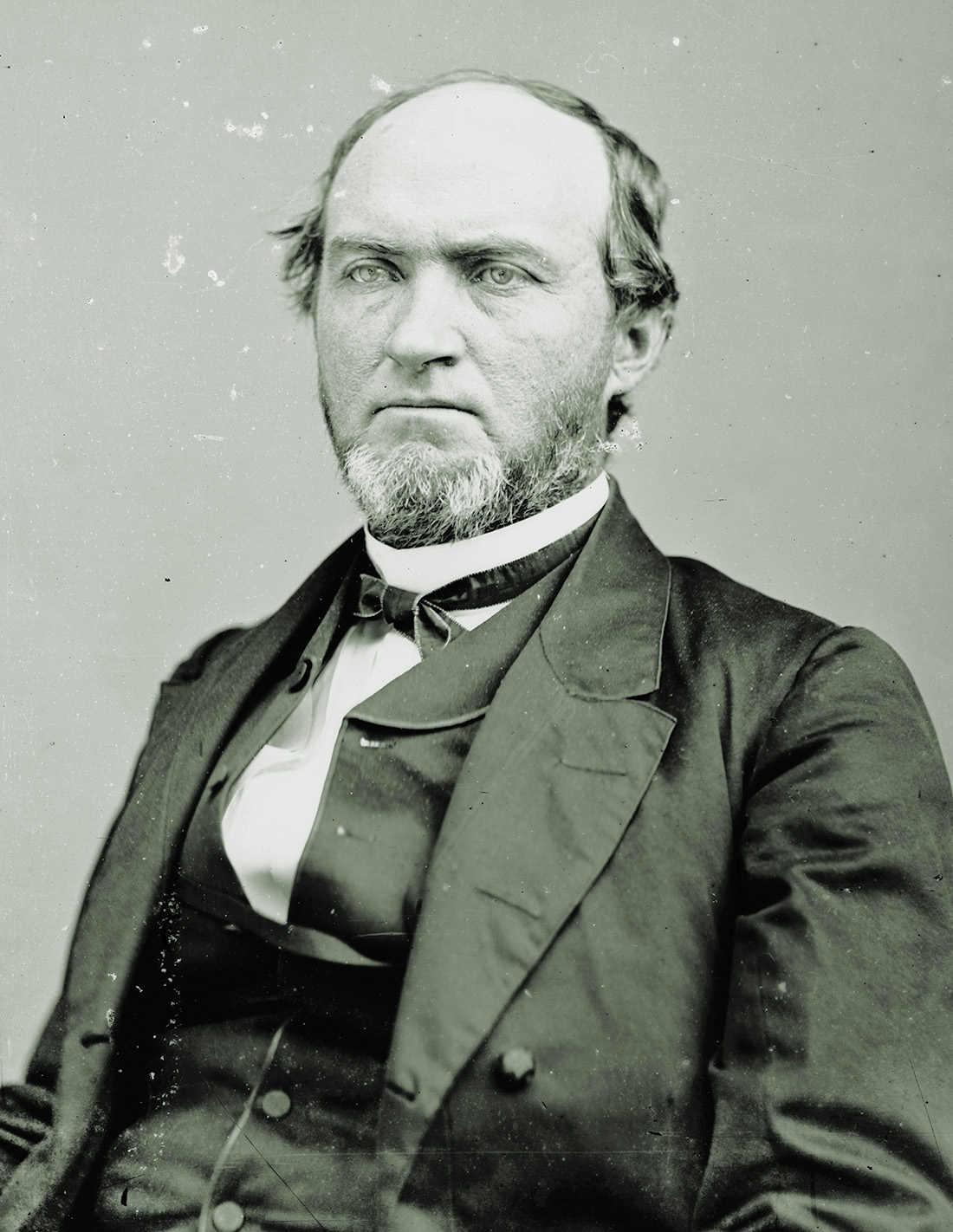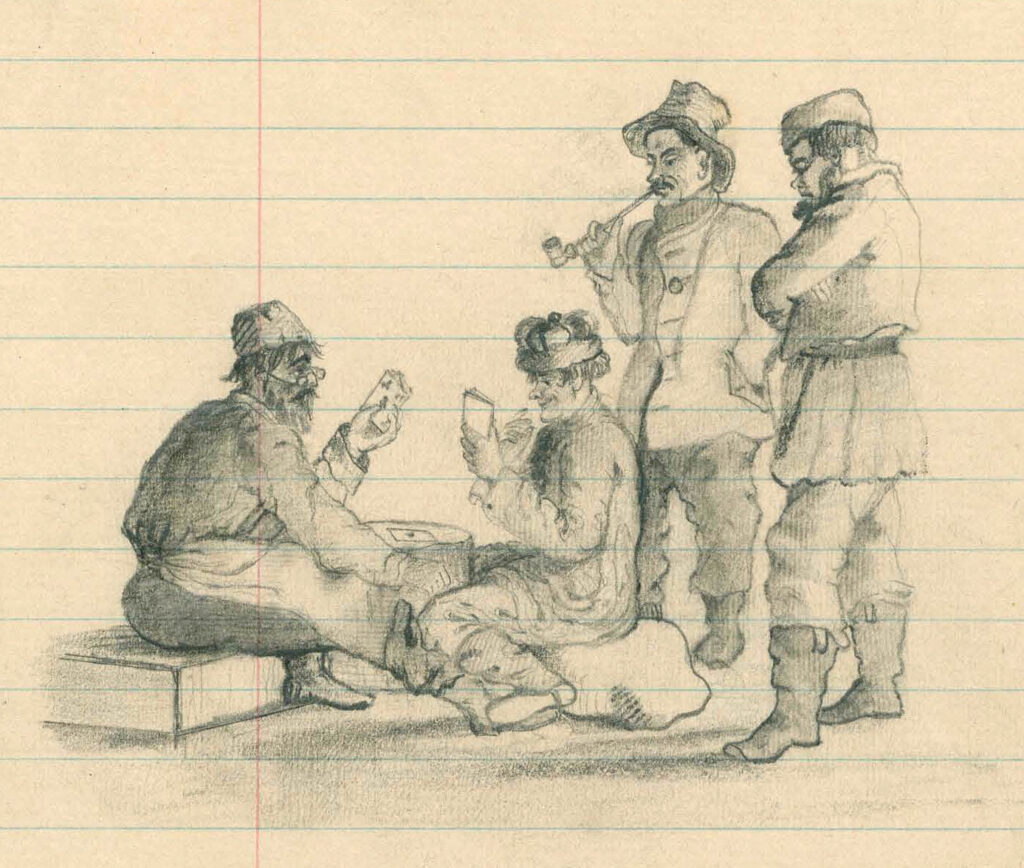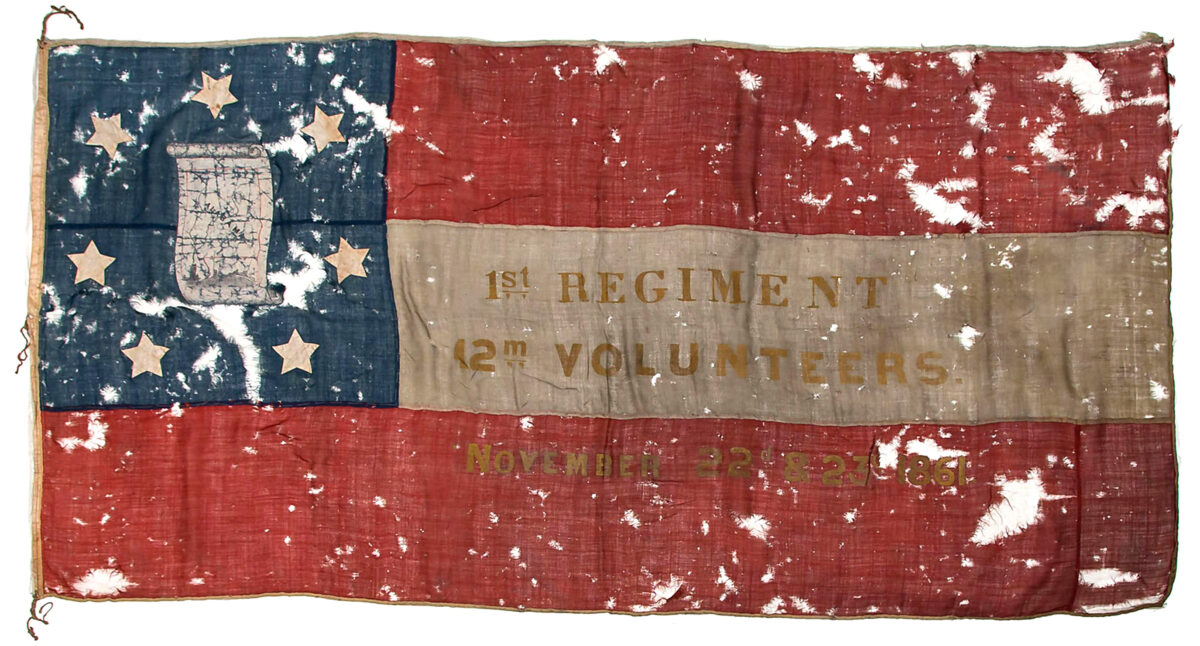Finding enthusiastic volunteers to serve was not a problem for the 1st Alabama Infantry at the outset of the Civil War. Young soldiers flocked to fill the regiment’s ranks, with 90 percent of the privates who signed up no older than 25, and its officers averaging 30 years of age.
Organized at Pensacola, Fla., in February 1861, the 1st Alabama consisted of 10 companies, all raised and transported to Pensacola independently. Henry D. Clayton served as the regiment’s first colonel.

During the first few months of the war, the regiment enjoyed relatively easy service. The men occupied the Barrancas Barracks and had their slaves do most of the menial work, including cooking, cleaning, and washing of clothes. They received a daily ration of one pound of fresh bread and another pound of beef, which they supplemented with boxes of provisions sent to them by their friends and families.
Because the men would be paid in gold and silver, the camp was transformed into a gambling den every payday. And, as happened in so many units during the war, disease wracked the regiment not long after it formed, meaning the regiment’s first casualties and deaths were the result of measles, malaria, or typhoid fever.
Although organized as an infantry unit, the 1st found itself initially under the watchful eye of Brig. Gen. Braxton Bragg, who had won acclaim during the Mexican War as an artillery officer, particularly at the Battle of Buena Vista on February 22-23, 1847—famously ordered by General Zachary Taylor to fire “a little more grape, Captain Bragg.” Throughout the war, the 1st Alabama received praise for its ability to seamlessly transition from infantry to artillery and back again whenever needed.
On November 22-23, 1861, the 1st participated in the bombardment of Fort Pickens, Fla. Not only did the Alabamians suffer no casualties, Bragg called the regiment “a well-instructed body of artillery”—high praise from the typically gruff general, who also authorized the 1st to list the date of engagement on its battle flag to recognize the exemplary marksmanship and discipline they had shown.
On March 5, 1862, the 1st was ordered to Missouri. In his official report, Maj. Gen. Leonidas Polk referred to the Alabamians as “Bragg’s best artillerists.” They eventually helped at Island No. 10 on the Mississippi River. After weeks of intense bombardment, Union forces surrounded the Rebel bastion with superior numbers of men, gunboats, and heavy artillery. With its lines of retreat cut and its ammunition nearly exhausted, the 1st surrendered with the rest of the island’s garrison on April 8, 1862.
Roughly 400 members of the regiment died from either the fighting or disease during its 27-day defense of Island No. 10.
Victorious Federals sent the regiment’s officers to the prison camp at Johnson’s Island on Lake Erie and the enlisted men to prison camps in Wisconsin and Illinois. In Wisconsin alone, 105 members of the regiment died, and most of them remain buried there today. Survivors of the 1st Alabama still in prison camps were exchanged starting on September 7, 1862. According to one account, young girls pelted the Alabamians with apples along the road, although it is not clear if the girls intended this an attack on their hated enemies or as an act of kindness to hungry men in desperate need of fresh produce.
On October 4, 1862, the 1st reported for duty at Port Hudson, La., on the Mississippi River. The depleted regiment entered Port Hudson with only 700 combat troops and a brass band. Less than half of those men were fit for active duty, the rest being too sick to participate in the fighting. The regiment served in Port Hudson as infantry and as heavy artillery during the siege. A small detachment from the regiment served as the Port Hudson “coast guard” operating small boats in the Mississippi River where they kept a lookout for Union forces. When not busy on lookout, the Alabamians used their small boats to go fishing, occasionally with the aid of artillery shells which became improvised depth charges that provided huge catches of tasty—possibly mangled—fish.
On March 14, 1863, as Union ships ran past the Port Hudson batteries, the regiment played a leading role in battering those vessels. According to one 1st Alabama veteran, Edward McMorries, “the scene became one of indescribable grandeur” as “the river and our line of fortifications looked like a solid sheet of electric glare and flame.” Unable to hear their officers over the horrific racket of artillery, the 1st’s gunners fell back on their training, loading and firing their cannons as quickly as possible without even trying to speak. Every man knew his duty and every man did his part. The Union fleet suffered dreadfully in sailing within range of the 1st Alabama’s expert gunners, and the Yellowhammer State boys congratulated themselves on a job well done.
Union forces returned to Port Hudson several weeks later and launched major assaults on May 27 and June 14, along with countless smaller attacks and constant artillery barrages. Members of the 1st Alabama took great pride in their work at Port Hudson, and one member of the regiment bragged that he and his comrades “repulsed with slaughter” every Union attack on their position. Major General Franklin Gardner, Port Hudson’s Confederate commander, praised the 1st Alabama for its “gallant conduct,” saying it was “deserving of highest praise.”
Despite the 1st’s courage and skill, the Federals slowly ground down the garrison. With Lt. Gen. John C. Pemberton’s surrender of Vicksburg, Miss., on July 4, 1863, Port Hudson became the last major Confederate stronghold on the Mississippi River.
Alone, surrounded, and nearly out of supplies, further resistance seemed futile. On July 9, 1863, Gardner surrendered Port Hudson and the 1st’s officers became prisoners of war once again, but this time the enlisted men were paroled and allowed to return home until they were exchanged.
On November 10, 1863, the 1st Alabama’s officers were again exchanged and assigned to service with the Department of the Gulf. The Alabamians helped defend Mobile Bay, patrolling the coast, manning the heavy artillery of Fort Gaines, and feasting on seafood that they supplemented with produce from a personal 10-acre vegetable garden. They saw little action, their most noteworthy moment coming when they executed a man they suspected was a Union spy. Confederate forces in Georgia needed reinforcements and the 1st Alabama received orders to stiffen the line. The regiment marched north but left its cannons behind. The men once known as “Bragg’s best artillerists” would serve as infantry for the remainder of the war.
On May 18, 1864, the 1st joined the Army of Tennessee near New Hope, Ga. Sherman’s blue-clad attackers gave the regiment little time to acclimate to its new home, launching a series of attacks on its positions on May 25–27. The 1st played an important role in the Atlanta Campaign, particularly at the Battle of Peachtree Creek on July 20, 1864. Nevertheless, Atlanta eventually fell to Union forces on September 2, 1864.
With Atlanta in Union hands, the 1st remained with the Army of Tennessee during its desperate offensive across Georgia, Alabama, and into Tennessee. The regiment crossed the Tennessee River near Florence, Ala., on November 20, 1864. As the Alabamians shuffled their bare feet across the snow-dusted ground, several ladies stood along the roadside, waving their handkerchiefs and crying. Decades later, a member of the regiment recalled that “their tears revealed that we were without any hope of success.”
At the Battle of Franklin on November 30, the 1st Alabama formed on the Confederate right. The regiment had come within about a hundred yards of the Union position when the Federals unleashed a volley. The veteran Alabamians responded with “rebel yells” and charged forward without waiting for orders or bothering to fire. When they got to the Union breastworks, the Alabamians reached over the works and fired their rifles at the Federals at point-blank range. Without time to reload, the sons of Alabama resorted to grappling hand-to-hand with Federals from Indiana and Illinois.

According to one veteran of the regiment, the Federals vastly outnumbered their attackers, but “men have never been made so brave as to be wholly unmoved by such audacity as the Confederates exhibited.” For a short time, the battle’s outcome hung in the balance at the bottom of a muddy ditch. Quantity, however, proved to have a quality all its own, as the Federals used their numerical advantages to force the Alabamians to retreat with heavy losses. The Union army evacuated Franklin that night , falling back toward Union-occupied Nashville, followed closely by the Army of Tennessee’s shattered remnants.
At the Battle of Nashville on December 15-16, 1864, the 1st again faced heavy fighting, serving near the center of the Confederate line on the battle’s opening day and withdrawing only when ordered to retreat. On the second day, the Alabamians once more found themselves near the center of the fighting. They successfully repelled repeated Union attacks until realizing in horror that the Confederate left flank was disintegrating, forcing members of the regiment to flee to avoid capture. On December 24, after a long and difficult retreat, survivors joined the remnants of the Army of Tennessee just south of the Tennessee River.
In 1865, the 1st Alabama received orders to join Confederate forces assembling in North Carolina for a last stand. Of the more than 3,800 men who had once served in the regiment, only about 100 were left—but those 100 or so answered the call. In what would be the Army of Tennessee’s final battle and the war’s last major clash, the 1st fought at Bentonville, N.C., on March 19-21, 1865.
With the surrender of the Army of Northern Virginia, and the collapse of the Confederate government, the war was all but over. On April 26, 1865, the 1st Alabama surrendered along with the rest of the Army of Tennessee. After more than four years of war, the regiment’s handful of survivors returned home to rebuild their lives and their communities.






